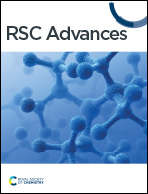Access to C(sp3) borylated and silylated cyclic molecules: hydrogenation of corresponding arenes and heteroarenes†
Abstract
This paper presents a simple and cost-effective hydrogenation method for synthesizing a myriad of cycloalkanes and saturated heterocycles bearing boryl or silyl substituents. The catalyst used are heterogeneous, readily available, bench stable, and recyclable. Also demonstrated is the application of the method to compounds that possess both boryl and silyl groups. When combined with Ir-catalyzed sp2 C–H borylation, such hydrogenations offer a two-step complementary alternative to direct sp3 C–H borylations that can suffer selectivity and reactivity issues. Of practical value to the community, complete stereochemical analyses of reported borylated compounds that were never fully characterized are reported herein.



 Please wait while we load your content...
Please wait while we load your content...